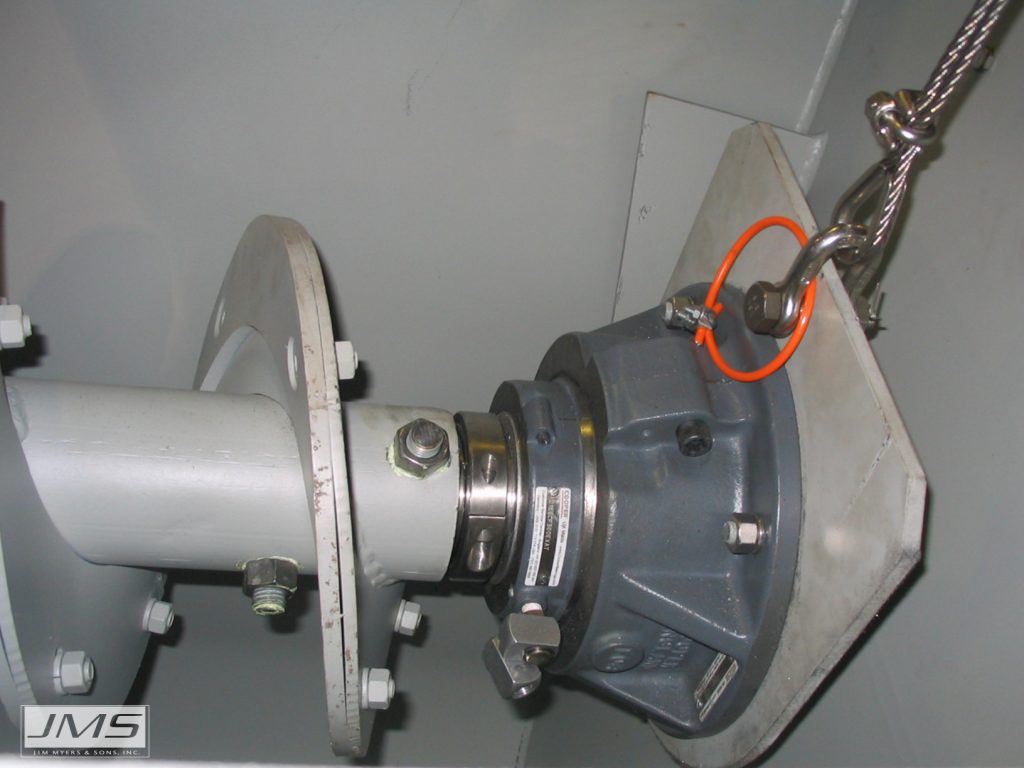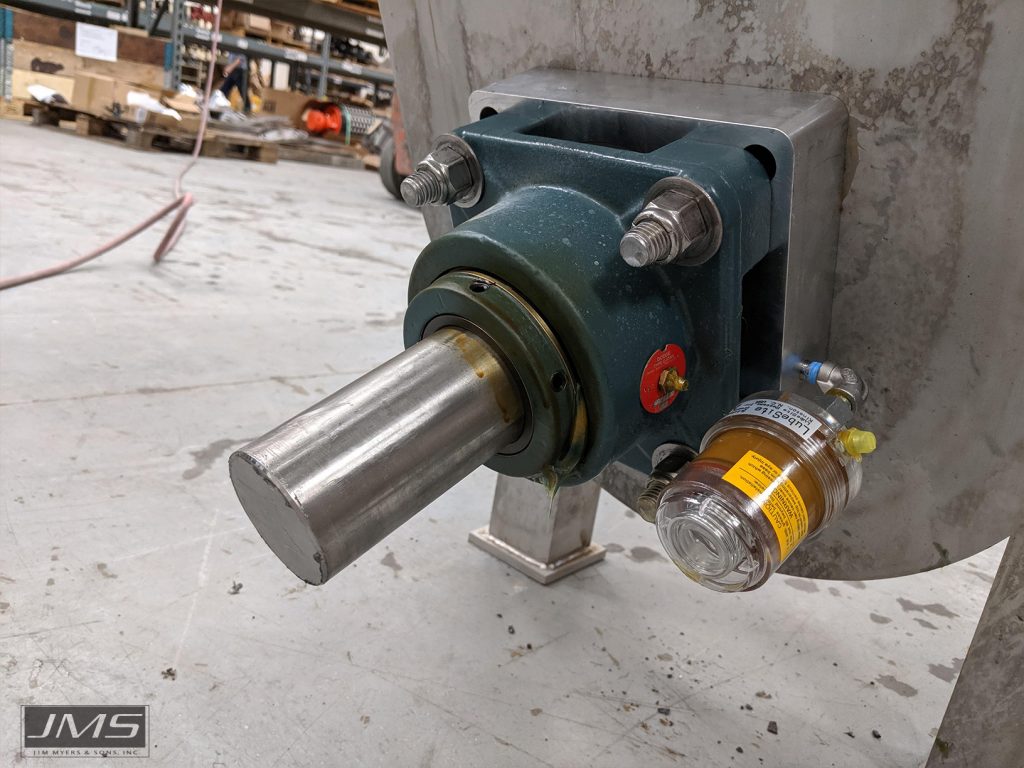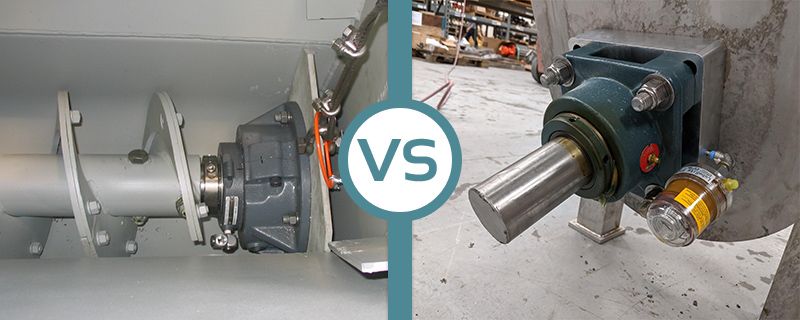Most grit classifiers employ an inclined shafted screw conveyor that rotates at a quite slow RPM and conveys grit from a hopper up and out of the water and then discharges into a dumpster or container. This shafted screw requires an end bearing assembly at both ends. The end bearing assemblies are the most critical wear item in the entire system. Lubrication and maintenance are required, there for the time and cost to do so needs to be minimized. If the end bearing is not maintained then the screw will ‘settle’ and cause damage to the trough itself, eventually wearing through and resulting in a leak. This is where consideration as to selecting the best lower end bearing system comes into play. For shafted screw grit classifiers there are fundamentally two styles of lower end bearing systems offered – either a grit classifier internal end bearing or external end bearing.


Grit Classifier Internal End Bearing
Given it being a grit application, abrasion is a key design consideration with grit classifiers. Corrosion is a factor, but abrasion is a more critical. Internal end bearings are located at the low end of the screw and are inside the hopper of the grit classifier. The question certainly arises – why would one want to put a bearing in such an abrasive environment, and in the area you are trying to collect grit? This is not to say that this design won’t work. A quality internal bearing will perform as intended. But for how long? With the bearing being ‘out of sight, out of mind’, it is too often that the first sign of failure is when the trough is worn through and it leaks – a ‘catastrophic’ failure and an expensive fix. As is often the case, there are pros and cons to each an internal and external end bearing system.
Internal End Bearing Pros
- No ‘wall’ penetration (i.e. end plate) below the water level
- An oil or grease sealed design can be employed
Internal End Bearing Cons
- Out of sight out of mind: If routine maintenance is not performed at regular intervals failure may be occurring unknowingly since the bearing is not readily visible
- The Operator must either drain the hopper completely to inspect the bearing, or some manufacturers offer an option to winch/raise the lower end of the screw to elevate and inspect the bearing
- Difficult to access and assess for maintenance
- Requires down time to inspect and perform routine maintenance
Grit Classifier External End Bearing
External end bearings are an option available for shafted grit classifiers. The fundamental concept is to remove the bearing from the internal grit collection location area and locate it outside of that environment. Additionally, this design offers clear ‘walk-by’ visibility of the seal and bearing, so that should a leak or problem occur it is readily visible before substantial failure occurs. Additionally, the assembly is readily accessible for maintenance or replacement.
External End Bearing Pros
- ‘Walk-by’ visibility to spot any problems early on
- Easy access for maintenance
- Low cost replacement parts
- Requires no downtime to inspect and assess during routine maintenance
- No intermediate hanger bearings are required (typically, due to relatively short conveyor length)
External End Bearing Cons
- Wall penetration below the water level
Jim Brettman has been with JMS for 9 years and serves on the sales side of the business as a Sr. Application Engineer focusing on the JMS Delta-SEPARATION. He has a BS in Civil Engineering from the University of Tennessee and worked in various positions with Exxon Co. for 12 years. After locating to Charlotte, Jim ran his own business for seven years as a rep for industrial wastewater treatment equipment and systems. Jim is proud to have worked closely with Dave Myers in closing the largest single sale by JMS to date, the Boston Deer Island Delta-SKIMMER (scum pipe) project. Jim says, “I thoroughly enjoy working with a Company that embodies integrity, quality, and service as its mantra, and working with our Reps to increase the sales of JMS products.”

